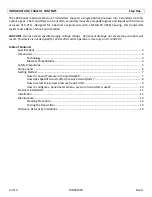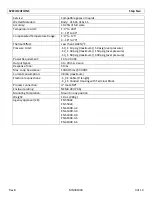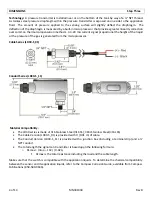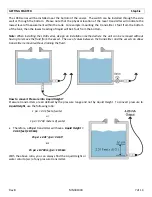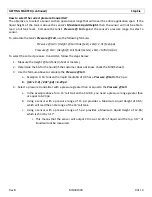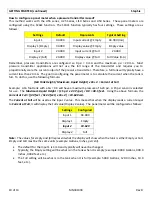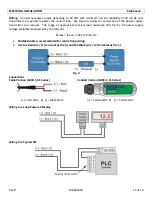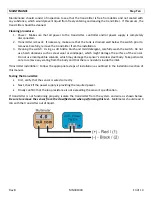
Rev
B
MN301030
9
of
14
GETTING
STARTED
(continued)
Step
Six
How
to
select
the
correct
pressure
transmitter?
The
objective
is
to
select
a
sensor
with
an
operational
range
that
will
cover
the
entire
application
span.
If
the
liquid
height
of
the
tank
is
above
the
sensor’s
Maximum
Liquid
Height
,
then
the
sensor
will
not
be
able
to
read
a
full
tank
level.
Compare
the
tank’s
Pressure
@
Full
against
the
sensor’s
pressure
range
to
select
a
sensor.
To
calculate
the
tank’s
Pressure
@
Full
,
use
the
following
formula:
Pressure
@
Full
=
[Height
@
Full
Tank
(feet)
x
SG]
/
2.31
(feet/psi)
Pressure
@
Full
=
[Height
@
Full
Tank
(meters)
x
SG]
/
0.704
(m/psi)
To
select
the
correct
pressure
transmitter,
follow
the
steps
below:
1.
Measure
the
Height
@
Full
Tank
(in
feet
or
meters).
2.
Determine
the
SG
for
the
liquid
(if
the
customer
does
not
know,
check
the
MSDS
sheet).
3.
Use
the
formula
above
to
calculate
the
Pressure
@
Full
.
a.
Example:
A
16’
tank
with
a
liquid
media
SG
of
0.9
has
a
Pressure
@
Full
of
6.23
psi.
b.
[(16’
x
0.9)
/
2.31’/psi]
=
6.23
psi
4.
Select
a
pressure
transmitter
with
a
pressure
greater
than
or
equal
to
the
Pressure
@
Full
.
a.
In
the
example
above
for
a
16’
tall
tank
with
a
SG=0.9,
you
need
a
pressure
range
greater
than
or
equal
to
6.23
psi.
b.
Using
a
sensor
with
a
pressure
range
of
15
psi
provides
a
Maximum
Liquid
Height
of
38.5’,
which
will
read
the
entire
range
of
the
16’
tall
tank.
c.
Using
a
sensor
with
a
pressure
range
of
5
psi
provides
a
Maximum
Liquid
Height
of
12.83’,
which
is
short
by
3.17’.
i.
This
means
that
the
sensor
will
output
20
mA
at
12.83’
of
liquid
and
the
top
3.17’
of
liquid
will
not
be
measured.


